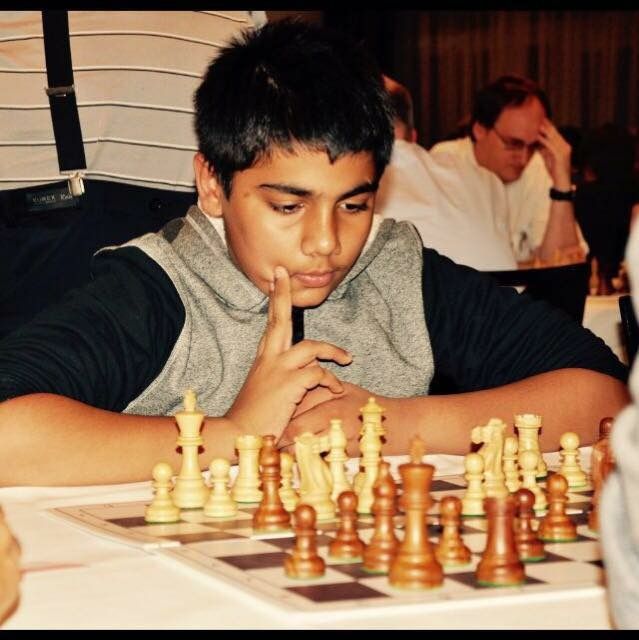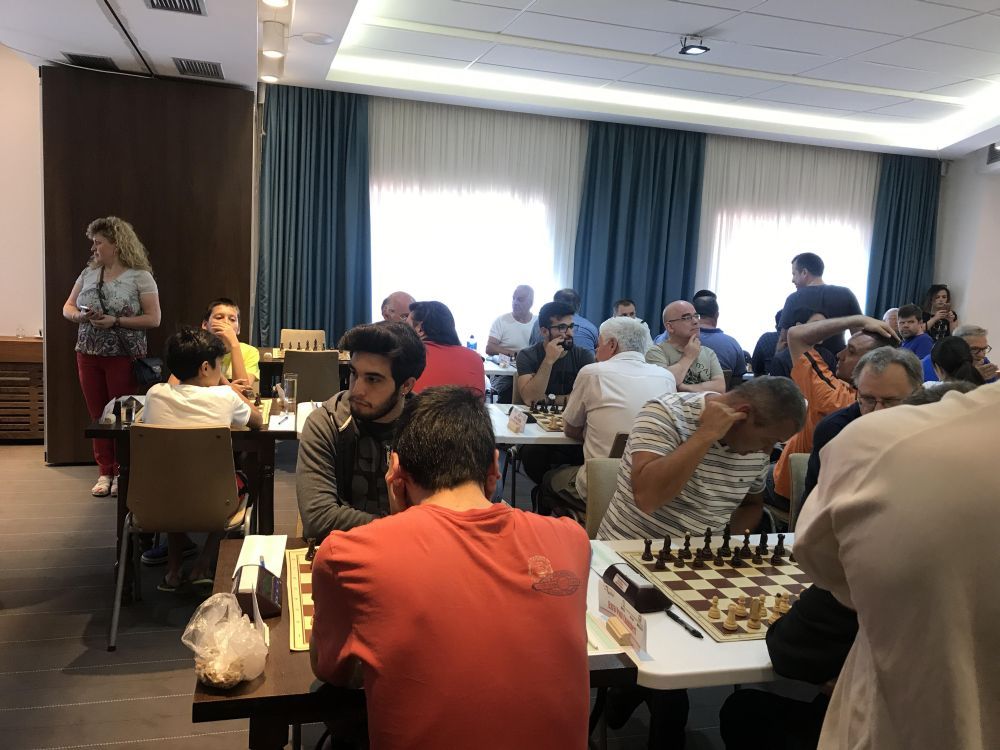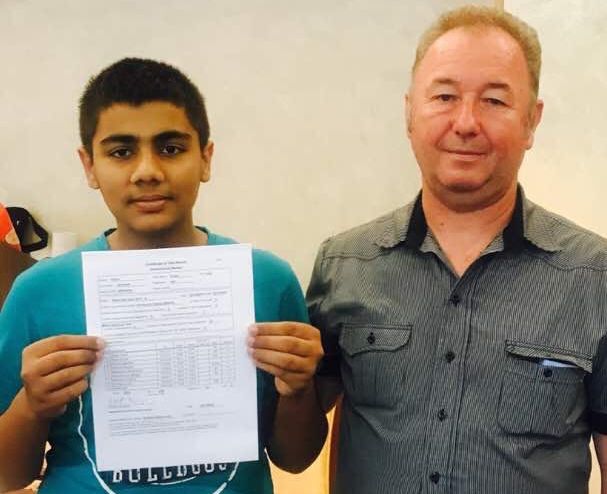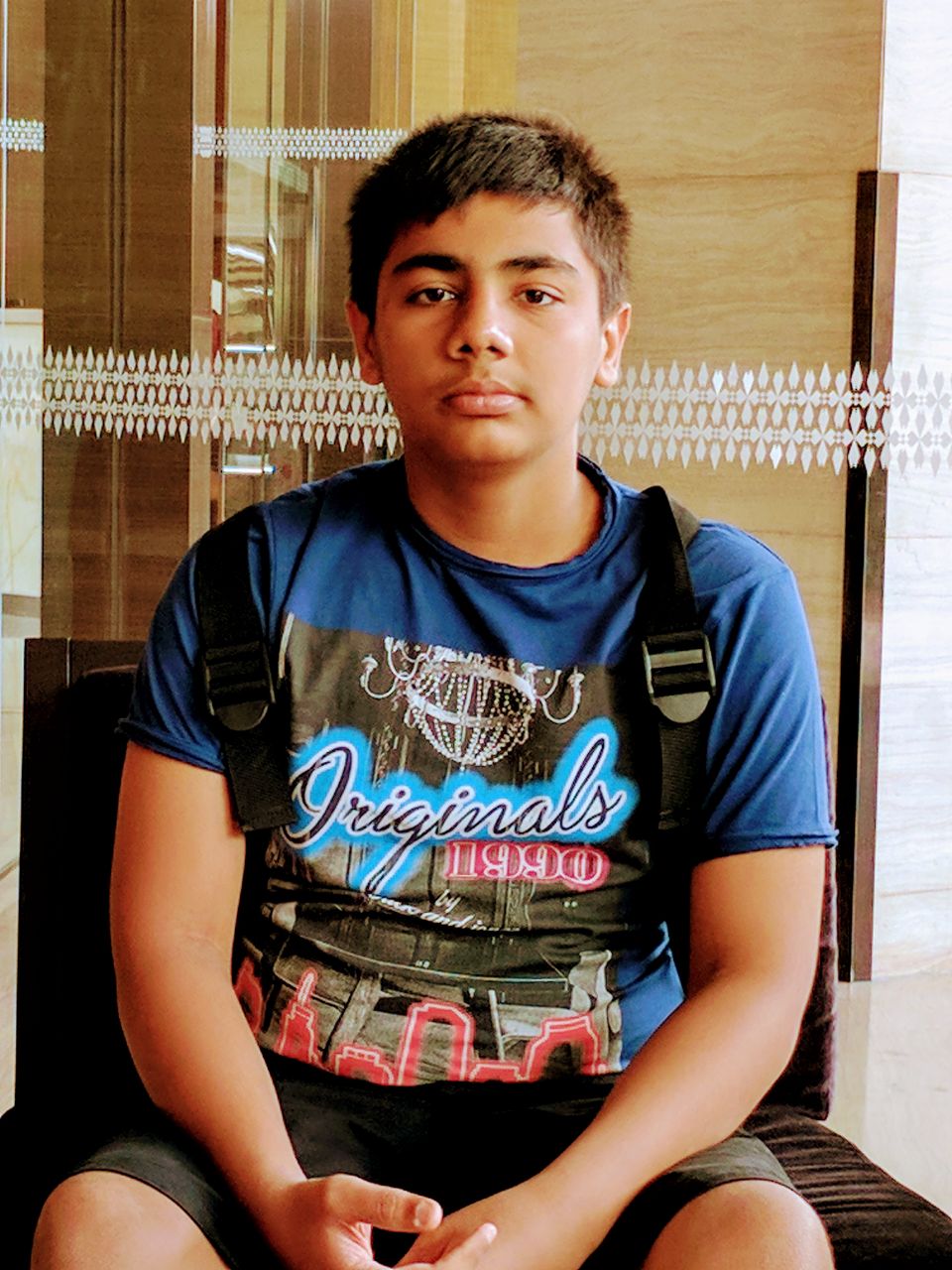13-year-old Prithu Gupta makes his maiden IM norm
Prithu Gupta started chess around four years ago. The 13-year-old worked hard consistently and achieved something truly special at the Silver Lake Open 2017 in Serbia a few days ago. The boy from Delhi made his maiden International Master norm. He also gained 137 Elo points and is now rated 2293. In this article apart from a some information about the tournament, you also get to see two of Prithu's deeply annotated games. From them you can clearly understand that the boy has huge talent and potential.

Prithu Gupta, started as a beginner in early 2014 with a rating of 1187. His immense passion for chess made him increase his rating to 2219 by September 2016 in the few tournaments that he played. Most of them were in his home town Delhi. A small ebb was followed by a mighty boost and as on 1st of July 2017 Prithu has a rating of 2293.

In June 2017 Prithu went to the Silver Lake Open in Serbia with a rating of 2155. The tournament was an extremely strong one with a rating average of 2248. 97 players participated in it from 15 countries with 10 grandmasters and 19 International Masters.


The 13-year-old from Delhi faced all nine higher rated opponents. He scored 5.5 points from the first eight rounds and achieved his IM norm with one round to spare.


Speaking to ChessBase India Prithu said, "Work hard in silence, let your success do the noise," was a quote which I read once.When I started playing chess as a 9-year-old, I didn't know where my passion for the game would take me. I was no child prodigy, had no national championships with me and was granted just a few years by my parents (and a lot of support too) to prove myself in the game. Somewhere in between putting my head in my school books and struggling with positions on the chess board, I managed to reach the threshold of my chess career. I am proud to get my first 'International Master' norm."

Final Ranking after 9 Rounds
| Rk. | SNo | Name | FED | Rtg | Pts. | TB1 | TB2 | TB3 | ||
| 1 | 3 | GM | Damljanovic Branko | SRB | 2526 | 7,5 | 51,0 | 55,5 | 0,0 | |
| 2 | 1 | IM | Petrov Nikita | RUS | 2548 | 7,0 | 50,0 | 54,5 | 0,0 | |
| 3 | 16 | GM | Tosic Miroslav | SRB | 2405 | 7,0 | 43,5 | 47,0 | 0,0 | |
| 4 | 11 | IM | Christiansen Johan-Sebastian | NOR | 2458 | 6,5 | 46,5 | 50,5 | 0,0 | |
| 5 | 8 | GM | Dobrov Vladimir | RUS | 2486 | 6,5 | 46,5 | 50,0 | 0,0 | |
| 6 | 4 | GM | Atalik Suat | TUR | 2525 | 6,5 | 45,5 | 48,5 | 0,0 | |
| 7 | 5 | GM | Nestorovic Nikola | SRB | 2509 | 6,5 | 43,0 | 46,5 | 0,0 | |
| 8 | 10 | IM | Gazik Viktor | SVK | 2460 | 6,0 | 46,5 | 51,0 | 0,0 | |
| 9 | 14 | GM | Abramovic Bosko | SRB | 2413 | 6,0 | 45,5 | 48,5 | 0,0 | |
| 10 | 29 | IM | Radovanovic Dusan | SRB | 2337 | 6,0 | 41,0 | 44,5 | 0,0 | |
| 11 | 31 | WFM | Marjanovic Annamaria | HUN | 2320 | 6,0 | 41,0 | 44,0 | 0,0 | |
| 12 | 34 | IM | Velickovic Sasa | SRB | 2309 | 6,0 | 36,5 | 40,0 | 0,0 | |
| 13 | 45 | WGM | Ozturk Kubra | TUR | 2266 | 5,5 | 45,0 | 47,5 | 0,0 | |
| 14 | 23 | FM | Ivic Velimir | SRB | 2370 | 5,5 | 44,5 | 49,0 | 0,0 | |
| 15 | 6 | GM | Savic Miodrag R | SRB | 2503 | 5,5 | 43,0 | 47,0 | 0,0 | |
| 16 | 70 | Prithu Gupta | IND | 2155 | 5,5 | 43,0 | 46,5 | 0,0 | ||
| 17 | 91 | Uysal Burak | TUR | 2037 | 5,5 | 42,0 | 46,0 | 0,0 | ||
| 18 | 7 | IM | Van Foreest Lucas | NED | 2488 | 5,5 | 40,5 | 43,0 | 0,0 | |
| 19 | 24 | IM | Nestorovic Dejan | SRB | 2364 | 5,5 | 39,5 | 43,0 | 0,0 | |
| 20 | 20 | Djordjevic Vuk | SRB | 2390 | 5,5 | 39,0 | 42,5 | 0,0 |
Complete list of final rankings

We asked Prithu send us his favourite game of the event and he sent us two. The first one is against Gabriella Antova (2289) from the second round of the tournament.
[Site "?"]
[Date "2017.06.19"]
[Round "2"]
[White "Prithu, Gupta"]
[Black "Antova, Gabriella"]
[Result "1-0"]
[ECO "B90"]
[WhiteElo "2155"]
[BlackElo "2289"]
[Annotator "Prithu Gupta"]
[PlyCount "89"]
[SourceDate "2017.06.19"]
[SourceVersionDate "2017.06.19"]
time I have played this move in a tournament.} e5 {There are many other
alternatives such as} (6... e6) (6... g6) (6... Nbd7) (6... Nc6) 7. Nb3 Be6 8.
f4 exf4 (8... Nbd7 {is the main move}) 9. Bxf4 Nc6 10. Qe2 $1 {My preparation
ended over here.} (10. Qd2 $6 Nh5 $1 {That's the difference between Qe2 and
Qd2.} 11. O-O-O Nxf4 12. Qxf4 g6 $1 {[%cal Gf8g7] Even if Black loses d6, the
powerful dark squared bishop will be enough to compensate the loss of the pawn.
}) 10... Be7 11. O-O-O Qc7 12. g4 O-O 13. Bg2 Nd7 14. Nd5 $1 Bxd5 15. exd5 {
Now White has a lot of space.} Nce5 16. Nd4 Rfe8 (16... g6 $5 {should act as a
prophylactic move to Nf5 but it has certain drawbacks} 17. g5 $1 $16 {[%cal
Gh3h4,Gh4h5] with the idea of h4-h5.}) 17. Kb1 Nc4 18. Rhe1 Nde5 19. Bc1 {
[%cal Gb2b3,Gd4f5,Gg4g5,Gh3h4]} (19. b3 {It's important to note that the
tempting move b3 fails because of} Na3+ 20. Kb2 Bh4 $1 $19) 19... Ng6 (19...
Bh4 20. Rf1 Ng6 21. Be4 $1 Rac8 22. b3 Nb6 23. Qg2 $16 {[%cal Gd4f5,Gc2c4,
Gc1b2]}) 20. b3 Nce5 (20... Bh4 21. Qxe8+ $1 $18) 21. Nf5 Rac8 22. Rd4 b5 23.
g5 $1 {It's important to play g5 intending h4 attacking black's king.} Qc5 24.
Re4 Bd8 (24... Qxd5 25. h4 $18 {Although white is a pawn down but still he has
a wnning attack intending h5 and even the g2 bishop is very strong. The rooks
along with the queen and the dark squared bishop joining with Bb2 will put
endless pressure on the e-file and if white wants, he will be able to win back
the pawn forcefully.}) 25. Be3 Qa3 26. Bc1 Qc5 27. b4 $1 {A risky decision,
but it fixes Black's Q-side. More importantly Black's pieces are not able to
move after this. After b4 White mainly weakens the c4 square but Black
wouldn't be able to put his knight on c4. Also breaks like a5 don't work like
we see in the game.} Qc7 (27... Qb6 28. h4 a5 (28... Rc4 29. a3 $16 {[%cal
Gc1b2,Gh4h5]}) 29. h5 Nf8 30. h6 g6 31. bxa5 $18) 28. h4 a5 29. Nd4 axb4 30.
Nxb5 Qb6 (30... Qa5 31. Nxd6 Ra8 32. a3 bxa3 33. Nxe8 a2+ 34. Ka1 Qc3+ 35. Bb2
$18 {Black doesn't have Qb2-Kb2-a1Q.}) 31. h5 Nf8 32. Nxd6 Qxd6 33. Rxe5 Rxe5
34. Qxe5 Qc5 35. Re2 f6 36. Qe3 fxg5 37. d6 $1 Qxe3 (37... Qxd6 38. Qb3+ Kh8
39. Re8 $18 Rc7) 38. Bd5+ $1 {It might be good to push Black's king away from
g8 (King on g8 could go to f7 in some lines) to h8 before taking the queen.}
Kh8 (38... Qe6 39. Rxe6 $18) 39. Bxe3 Bf6 40. Bb6 h6 41. Bc7 Bd8 42. Re8 (42.
d7 $1 Rxc7 43. Re8 Rxd7 44. Rxf8+ Kh7 45. Bg8+ Kh8 46. Bf7+ Kh7 47. Bg6#) 42...
Bxc7 43. Rxc8 Bxd6 44. c4 $1 bxc3 45. a4 1-0
The second game annotated by Prithu is his seventh round win over IM Zoran Markovic. Have a look at this piece sacrifice in the Sveshnikov Opening. A very powerful and dynamic game.
[Site "?"]
[Date "2017.06.19"]
[Round "4"]
[White "Prithu , Gupta"]
[Black "Markovic , Zoran"]
[Result "1-0"]
[ECO "B33"]
[WhiteElo "2155"]
[BlackElo "2353"]
[Annotator "Prithu Gupta"]
[PlyCount "65"]
[EventDate "2017.??.??"]
[SourceDate "2017.06.19"]
[SourceVersionDate "2017.06.19"]
Na3 b5 9. Bxf6 gxf6 10. Nd5 f5 11. Bd3 Be6 12. c3 Bg7 13. Nxb5 axb5 14. Bxb5
Bd7 15. exf5 Nb8 $5 {is still considered to be an interesting theoretical
trend, although 0-0 is seen more often in tournament practice. It is becoming
popular because of players such as Ni Hua,Judit Polgar and Shirov being some
of its adaptors.} (15... O-O {is the main move}) 16. a4 O-O 17. f6 $5 {At this
point I couldn't remember my preparation.I recalled some setups where I had to
give up 2 pieces for a rook and a pawn.} (17. O-O $142 Bxf5 18. Qf3 Bd7 19.
Nf6+ Qxf6 20. Qxa8 $14 {should be a more precise move order}) 17... Bxf6 18.
Qf3 (18. Nxf6+ Qxf6 19. Bxd7 Nxd7 20. Qg4+ Qg6 21. Qxd7 Qe4+ 22. Kf1 Rfb8 $44 {
Black has decent compensation}) 18... Bxb5 (18... Bh4 19. Ne7+ Qxe7 20. Qxa8
Nc6 21. Qa6 $14) (18... Bg7 19. Nf6+ Qxf6 20. Qxa8 $14) 19. Nxf6+ Kg7 (19...
Kh8 20. Nxh7 $1) 20. Qxa8 Bc6 21. Nh5+ $1 {should be an important intermediate
move. Although it might look that Black's king is totally safe on h5 but still
there are some activity based-issues that will continue to bother Black as
they did in the game.} Kg6 22. Qa7 Kxh5 23. O-O Kg6 {even moves like b4 may
give white a clear advantage in this position but after f4 at some point black
has to play e4-which decrease the bishop's activity.} (23... Rg8 24. Qxf7+ $18
{now it's only because of the king on h5 that Black isn't able to bother White
on the king side despite having a superb bishop on c6}) 24. f4 $1 f5 25. Rad1
e4 26. Rfe1 $5 {[%cal Ge1e3,Ge3g3] Using the fact that Black's king is weak on
g6 White lifts his rook to pose more problems} Rf6 27. Re3 Nd7 28. Rg3+ Kf7 29.
a5 Qc8 (29... Qb8 30. Qxb8 Nxb8 31. c4 $18) 30. c4 Ke6 31. Qd4 Qb8 32. Rg7 Nc5
33. Qd5+ 1-0

Prithu is definitely a huge talent of Indian chess. More than all the ratings and norms, you can clearly see the strength in his moves and games. ChessBase India wishes him a very bright future.
Related article:
From 1187 to 2219 in just three years
About the author

Jitendra Choudhary is a chess trainer in Delhi. He is from Madhya Pradesh, but shifted to Delhi to pursue his passion related to chess. He currently teaches students, works as an arbiter and would like to dedicate more time to being a chess journalist.
